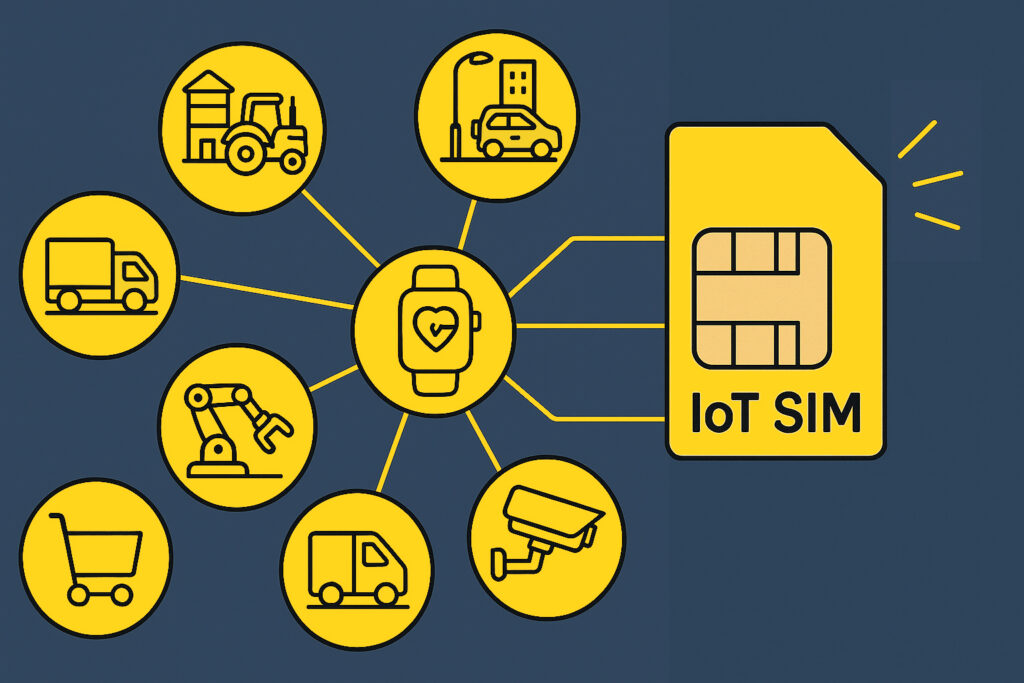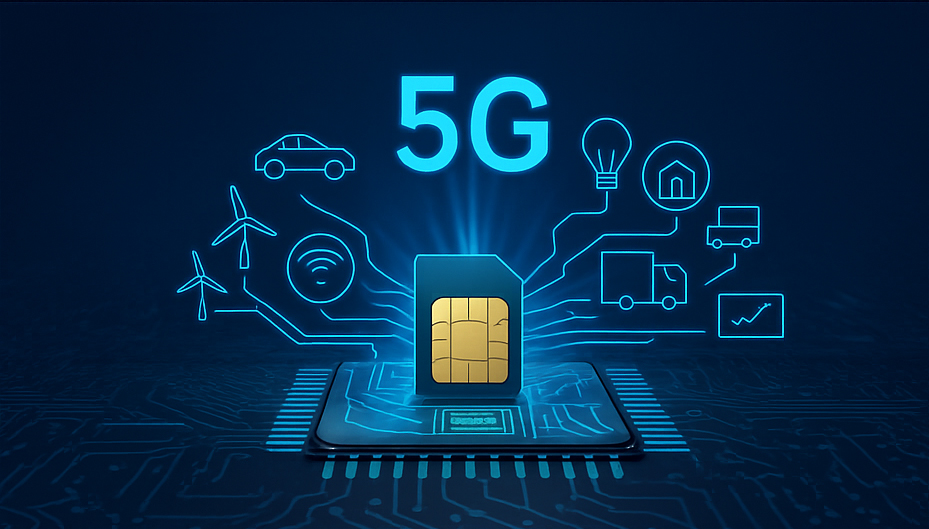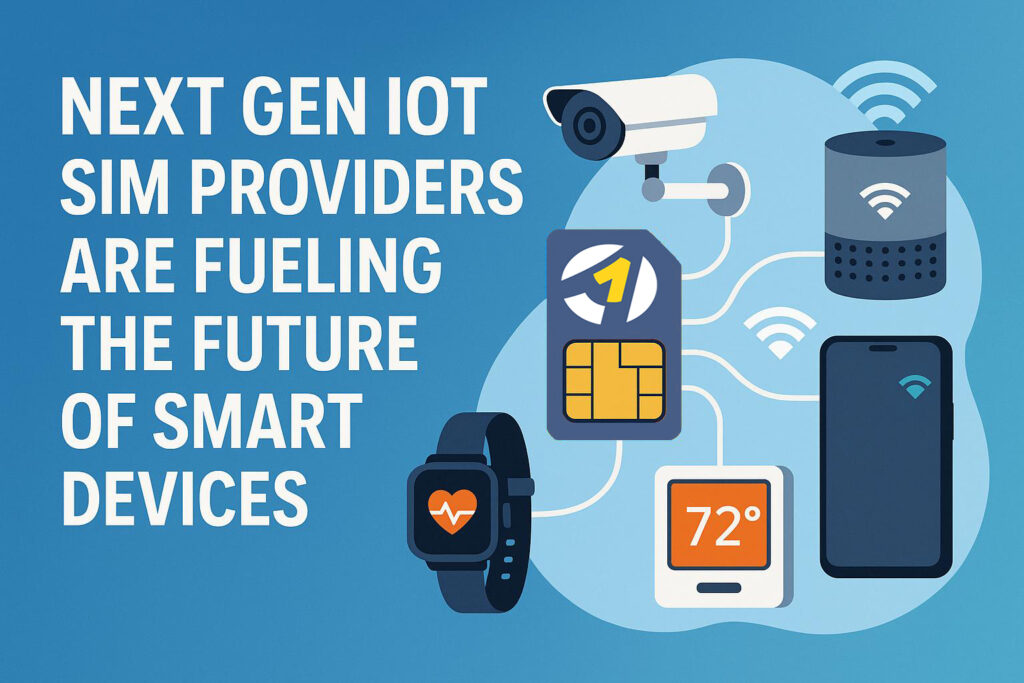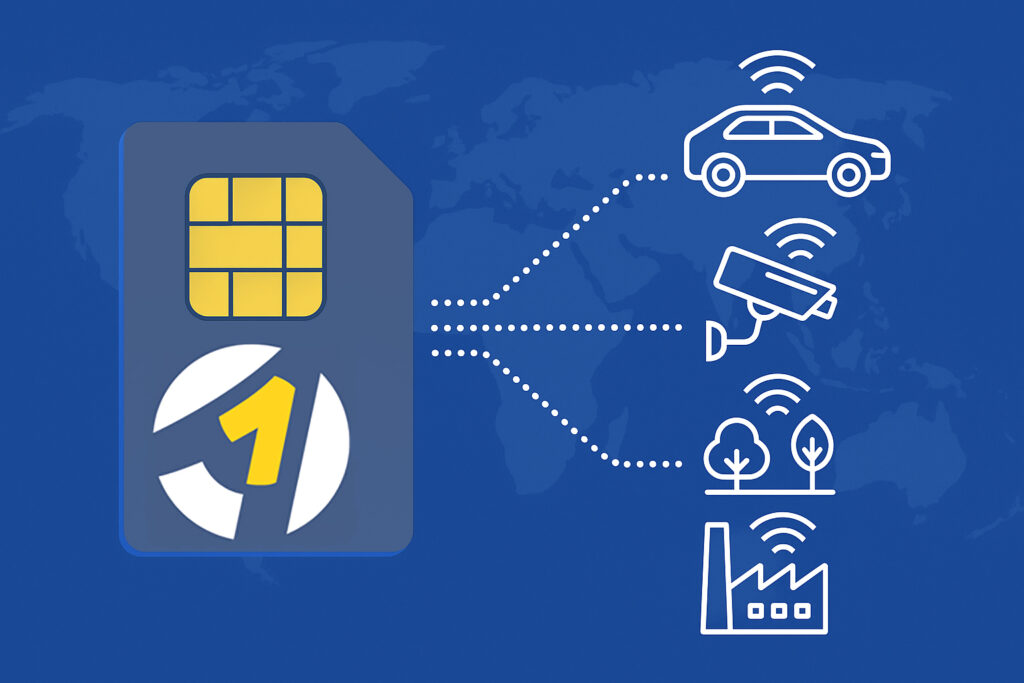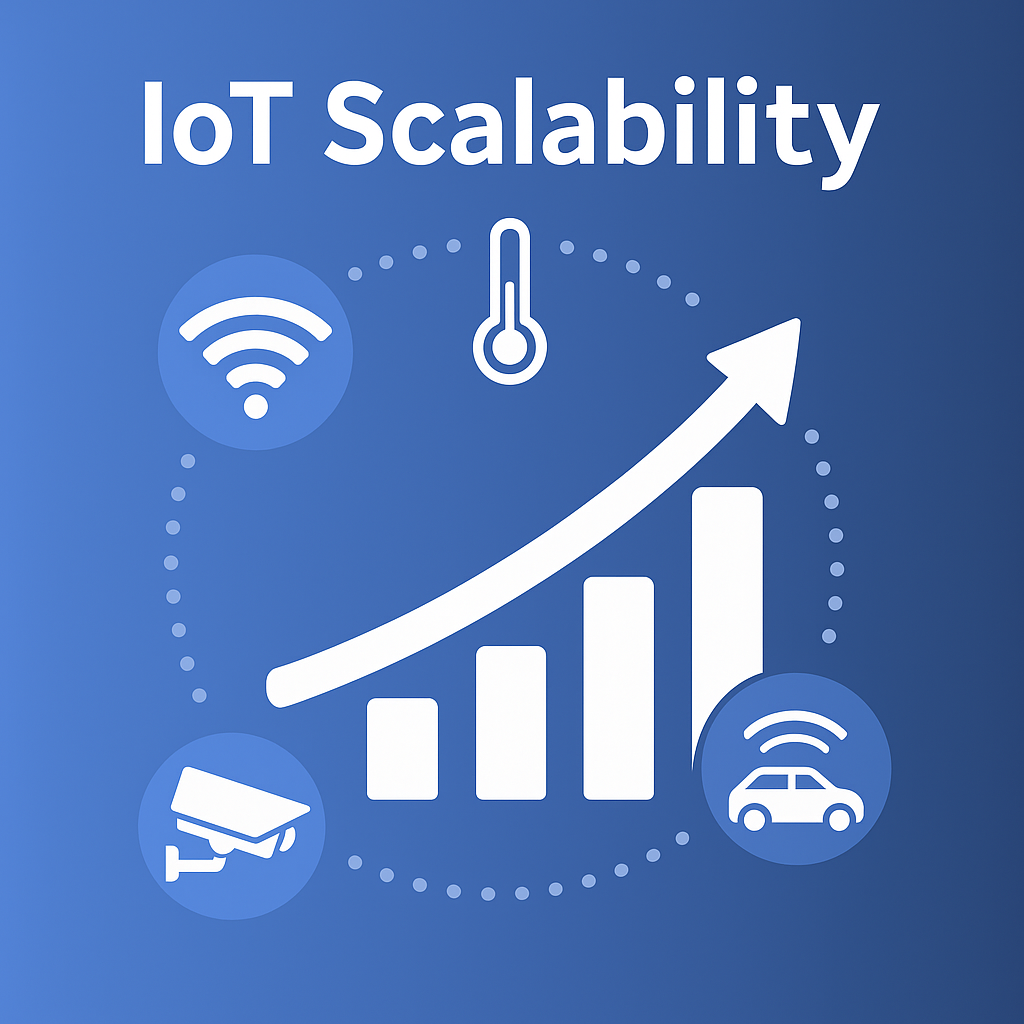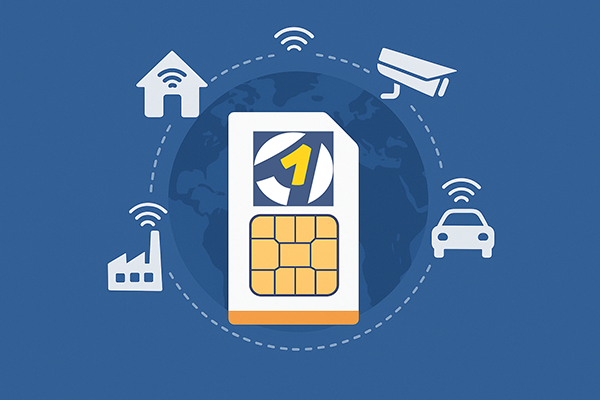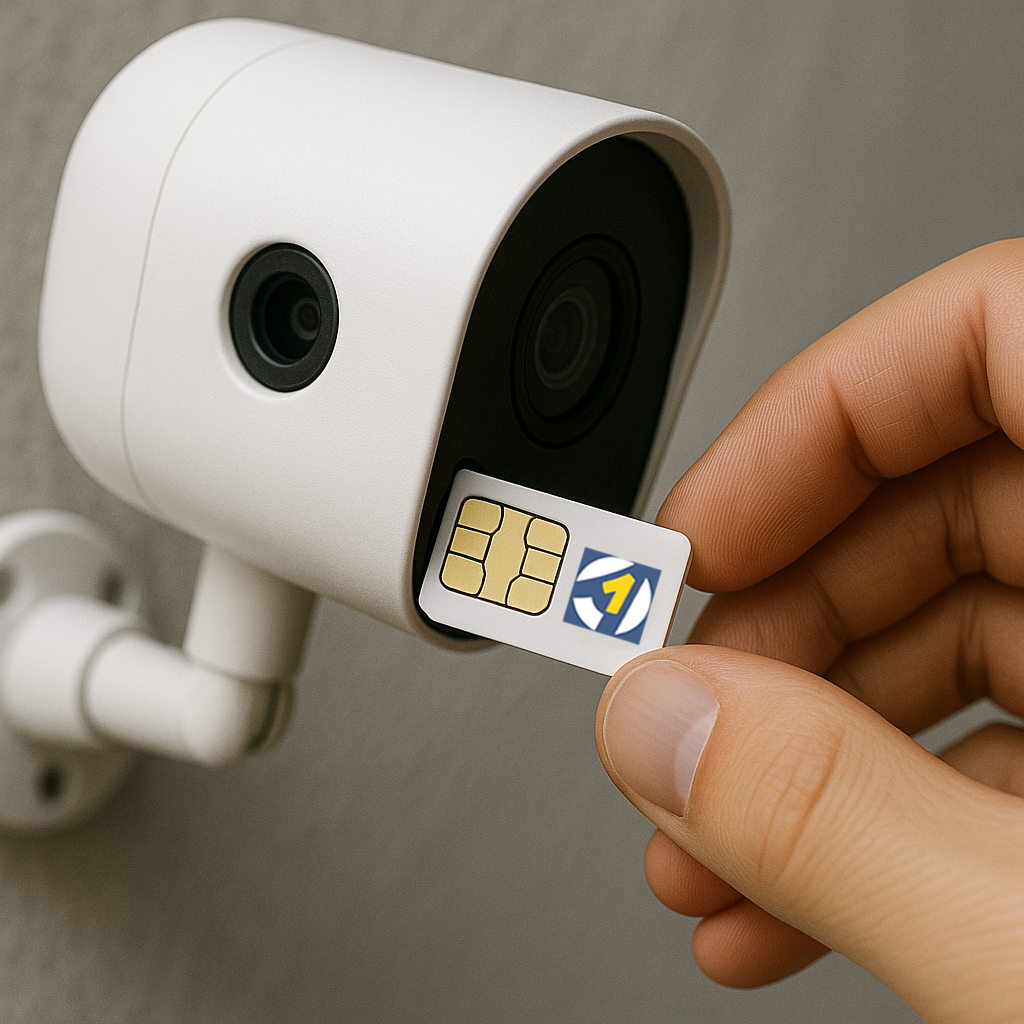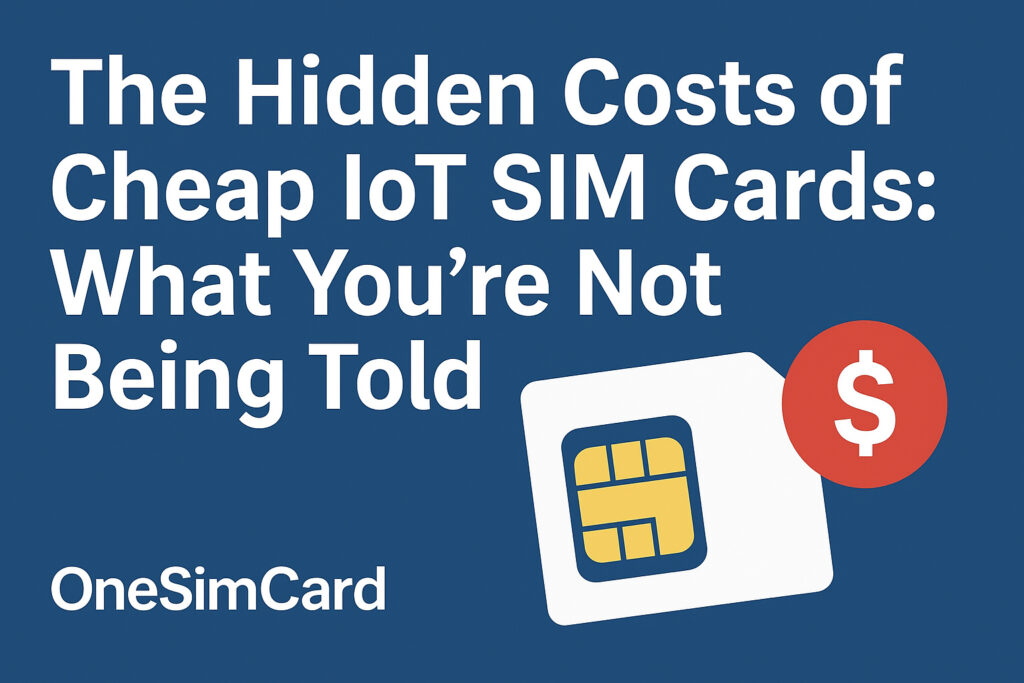
Introduction: Cheap Doesn’t Mean Smart When It Comes to IoT
It’s tempting: you’re managing an IoT deployment across multiple countries, and a provider offers you rock-bottom rates on IoT SIM cards. Sounds great, right? Unfortunately, what many businesses don’t realize is that choosing a cheap IoT SIM card can cost far more in the long run—through downtime, throttled performance, limited support, and hidden fees.
In this blog, we uncover the true cost of going cheap and explain why OneSimCard IoT offers the best value and performance for global M2M and IoT deployments.
1. Network Steering: A Hidden Threat to Uptime
Many low-cost IoT SIM providers engage in network steering. This means the SIM is programmed to prioritize the cheapest available network in a given region, not necessarily the most reliable one. The result? Weak signals, dropped connections, slow speeds, and poor device performance.
OneSimCard IoT uses non-steering SIMs, meaning your device always connects to the strongest, most reliable network available—not just the cheapest. That equals better uptime, especially in mission-critical applications like:
- Asset tracking across borders
- Remote monitoring for infrastructure
- Smart agriculture devices in rural zones
2. Limited Network Access = Coverage Gaps
Budget SIMs often come with access to a single or limited number of carrier networks. That might be fine in urban areas, but what happens when your devices move? Or operate in rural or developing regions?
OneSimCard IoT SIMs connect to over 450 networks in 200+ countries, ensuring maximum coverage and redundancy. When a device loses signal with one network, it seamlessly connects to another—automatically.
Use Case: A logistics company using a low-cost SIM had 5% tracking downtime due to rural blackouts. After switching to OneSimCard, uptime jumped to 99.9% thanks to multi-network redundancy.
3. Throttling and Fair Usage Limits
Ever read the fine print on a cheap data plan? Many budget IoT SIMs advertise “unlimited” data or low costs per MB but implement throttling once you cross a certain threshold. Suddenly, your 4G device is crawling on a 2G network.
OneSimCard doesn’t hide behind throttling gimmicks. We offer transparent, scalable data plans starting at just $0.005/MB, tailored to your actual usage with pooled or PAYG data plans, flexible billing, and clear thresholds.
4. Lack of Real-Time Monitoring and Management Tools
A major hidden cost of cheap IoT SIMs is the lack of SIM management portals or limited API access. Without visibility, you can’t:
- Track usage in real time
- Remotely activate/deactivate SIMs
- Set usage alerts or thresholds
- Troubleshoot connectivity issues
OneSimCard offers a robust IoT SIM Management Portal and APIs that give you full control of your fleet. From a single dashboard, you can manage thousands of SIMs across continents.
5. Weak Security Infrastructure
Many budget providers offer generic APNs and no support for private static IPs, VPNs, or encrypted tunnels. In sensitive industries like healthcare, financial services, or industrial IoT, this is a major risk.
OneSimCard offers private static IPs, custom APNs, and VPN tunneling, so your IoT deployment is secure, compliant, and protected from external threats.
6. No SMS Fallback Options
Some devices require SMS fallback—for alerts, control commands, or emergency communication. Cheap IoT SIMs often lack this option entirely.
With OneSimCard, you can add SMS functionality via our Track SIM or M2M Global SIM..
7. Limited or Non-Existent Support
What happens when something goes wrong? Many cheap providers offer email-only support, and response times could be hours (or days).
OneSimCard provides best-in-class support, including phone, live chat, web ticket, and email. Our team understands IoT and can help troubleshoot fast.
8. Hidden Fees That Add Up Fast
Low advertised rates often mask:
- High roaming charges
- Fees for SIM activation or replacement
- Unexpected billing for overages
OneSimCard is transparent with all pricing. We don’t believe in surprises. Our pricing model supports large-scale deployments with customizable plans and no nasty gotchas.
9. Inflexible SIM Types
Some cheap providers offer a one-size-fits-all SIM—not ideal if you need industrial-grade, rugged, or embedded eSIMs.
OneSimCard offers multiple IoT SIM form factors, including:
- Industrial SIMs
- M2M Global SIMs
- Track SIMs
- eUICC/eSIM support for remote provisioning
Why OneSimCard is the Best Choice for Serious IoT Deployments
Here’s what makes us the smart investment:
| Feature | Cheap IoT SIMs | OneSimCard IoT |
| SIM Steering | Yes | No |
| Multi-Network Redundancy | No/Partial | Yes |
| Transparent Pricing | Often hidden fees | Clear and flexible |
| Global Coverage | Limited | 200+ countries, 450+ networks |
| Real-Time Management Tools | Often missing | Full portal + API |
| Security Features | Basic | VPN, private IP, custom APN |
| SMS Support | Rare | Available |
| Free Support | Often lacking | Award Winning |
Conclusion: Cheap is Expensive in the World of IoT
In IoT, downtime, limited control, and security gaps can cost your business far more than a few dollars saved per SIM. That’s why savvy businesses choose OneSimCard.
With OneSimCard IoT SIMs, you get a premium experience without premium headaches:
- Fast, reliable connectivity
- Full SIM lifecycle control
- Global scale
- Transparent billing
- Real support when you need it
Stop paying for cheap. Start investing in quality.
Explore OneSimCard’s IoT SIM solutions today and deploy with confidence.



